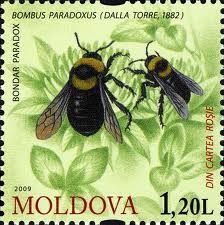While the decline of B. franklini in southwestern U.S.A. and B. affinis in eastern North America have been well documented and quantified, there are few baseline data for comparing previous and current abundances of B. occidentalis, the Western Bumblebee. Here we provide a comparison of the relative abundance of B. occidentalis after 20 years in the Fraser Valley of British Columbia, Canada. Bombus occidentalis was the second most abundant bumble bee in blueberry fields in 1981 (27% of collected bumble bees), and it was the second most common Bombus species, overall, collected in berry fields and natural vegetation (approx 22%) in 1982. In 2003–2004, this species represented less than 1% of the Bombus collected (26 individuals of the 2738 total). Likewise B. occidentalis was the most abundant bee (55% of bumble bees, 312 individuals) in cranberry fields in 1982 and second most abundant bee in 1981 (41% of bumble bees, 104 individuals) but was represented by 2 individuals (0.3% of bumble bees) in cranberry fields in 2003 and was absent from cranberry fields in 2004. Bombus occidentalis was also very low in abundance in urban habitats adjacent to this region in a survey performed during the same time period (2 individuals, 0.1% of bumble bees). These results provide quantitative evidence that wild populations of B. occidentalis have declined in western Canada.
Source:
Sheila R. Colla and Claudia M. Ratti (2010) THE PAN-PACIFIC ENTOMOLOGIST 86(2):32–34 (attached)

- Log in to post comments
